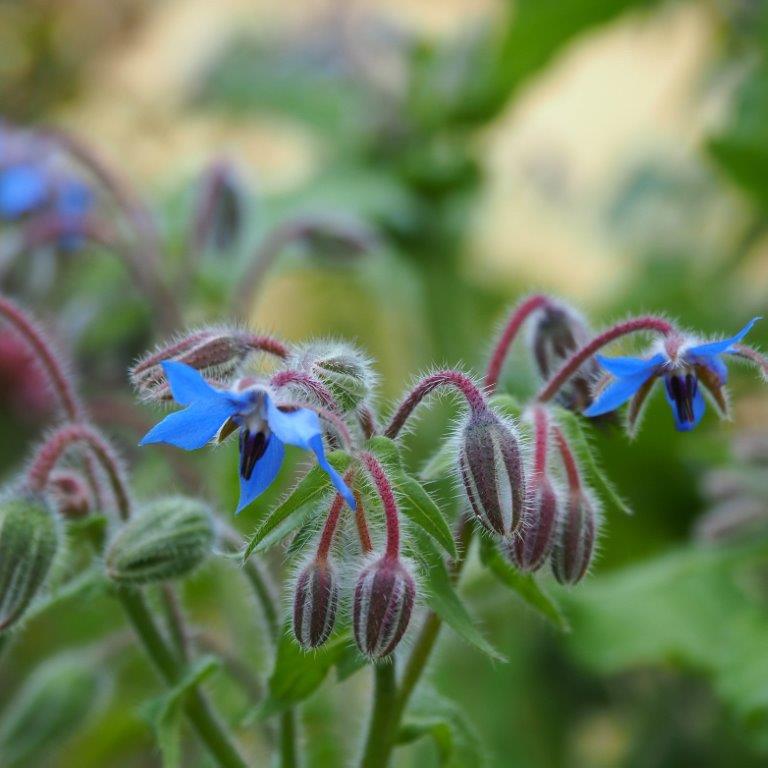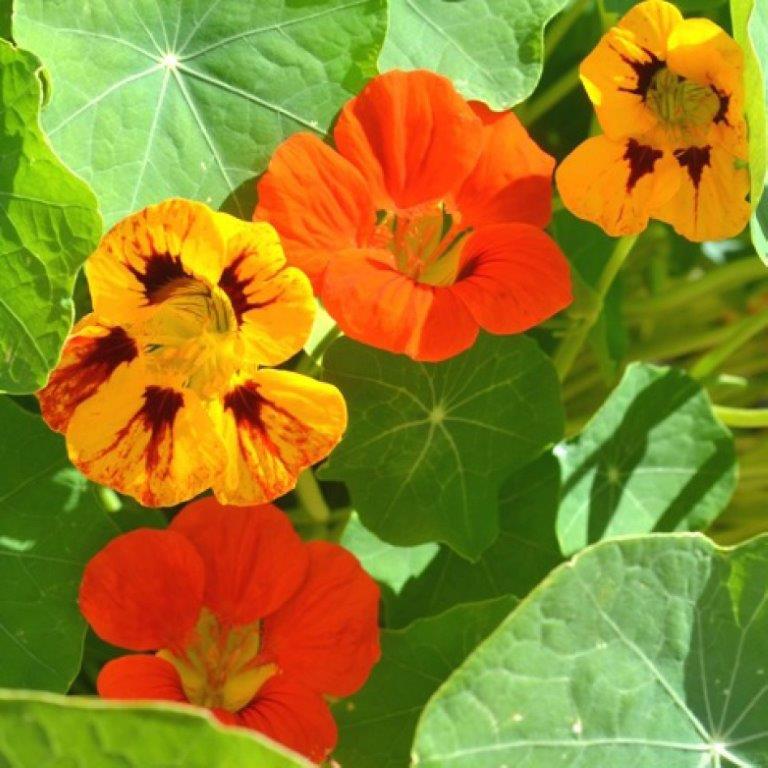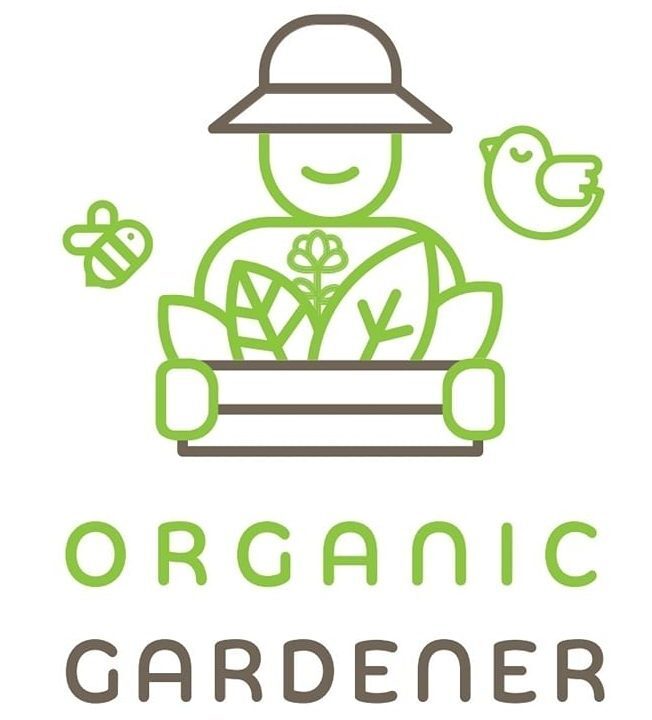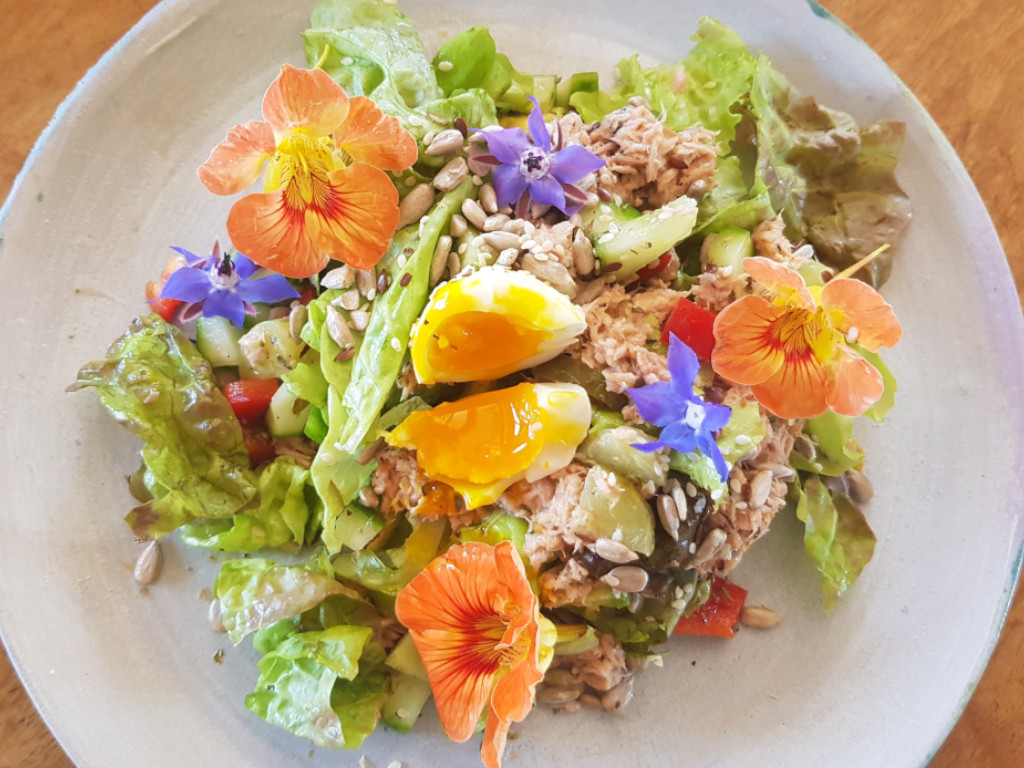Flowers aren’t just only beautiful – many are also edible.
Some edible flowers, such as sweet violets and purple, yellow and white violas, look fantastic on cakes, desserts or frozen to add to cocktails. Add delicate pink and white radish flowers to bring a mild, peppery flavour to salads, and dip marrow or courgette flowers in batter before deep frying them.
By growing your own organic edible flowers, you can be sure they are 100% pesticide-free and have not been contaminated by dogs or other pets, so they’re suitable for culinary use.
Many garden flowers are edible, and we list a few below:
Nasturtium
Nasturtiums are beautiful flowers with a peppery flavour that can add zing to salads and other dishes. The peppery flavour resemble that of a radish. The orange, red and yellow flowers are tasty in pasta dishes and salads. Use the flower, leaves, and buds for the strongest flavour. Also excellent for companion planting with runner beans, as they are attractive to blackfly.
All parts of this beautiful plant are edible, from the flowers and seed pods to the stems and leaves. The flavour ranges from light to strong, with the flowers being the lightest and the seeds holding the strongest flavours.
You may find that sometimes the leaves leave a bitter taste in your mouth that you don’t tend to experience throughout the other parts of the plant. The stems can have a similar texture to that of chives and are often used as a garnish.
All kinds of nasturtium plants can be eaten and are also useful in the kitchen. You can brighten up your meals by cooking up your own organic Nasturtium trailing or dwarf mix.
Just make sure you wash the plants thoroughly before eating them if they’re from a plant you’ve picked in the wild, in case they might have been sprayed with any chemicals. Nasturtiums are edible and non-poisonous to humans, but they could be poisonous to cats, dogs, and other animals or wildlife.
Viola Tricolour
Because of its medicinal properties, the viola tricolour has long been used as an edible flower in salads and sweets.
It’s a tiny shrub with violet and yellow-faced miniature pansy flowers, with a delicate and fragrant flavour. The leaves of the herb are aromatic and flavoursome and can be used as a seasoning for stuffing and casseroles.
The leaves can be dried and frozen or added to sauces and soups on the day they are prepared. The flowers can be used in salads or dessert dishes such as ice cream and sorbets.
Their nectar and pollen attract bees, butterflies, and other insects, and they can also be used in floral designs.
Borage
Borage is an annual herb with bright blue flowers that grow on long stems and thrive in full sun to partial shade in average to poor soil with good drainage.
The plant can be harvested in late spring through early fall and the flowers can be used to make borage syrup that can be used as a versatile sweetener in drinks or desserts or as a condiment on food. The leaves are also edible and can be tossed into salads, while the seeds are rich in nutrients and can be used in cooking, herbal supplements, and alcoholic beverages.
Borage plants can be self-sown and they grow quickly, while borage flowers are available year-round and can be used fresh or dried. Borage is a delicate edible flower with a sweet flavour that works well in salads or desserts.
The cucumber flavour comes through in the sky-blue flowers of this fuzzy-leaved herb. Add it to fruit salads, green salads, or ice cubes for refreshing drinks.

Borage

Nasturtium

Viola Tricolour
Marigolds or Calendula
Marigolds are great for companion planting alongside beans, luring away aphids. They also attract beneficial insects such as lacewings, ladybirds and hoverflies. With a bright yellow or orange colour and a mildly peppery taste, calendula petals are delicious in stews, soups and puddings. Their bright colours and strong scent make them perfect for decorating flower arrangements and weddings. You can also dry or pickle the petals or add them to butter or oil. With so many delightful uses, marigolds are a must-have in everyone’s garden.
The edible parts of a marigold are its flowers and leaves. The marigold flowers are high in quercetin, a potent antioxidant and anti-inflammatory.
The leaves are rich in fibre and have high levels of beta-carotene and chlorophyll. While only having a small number of carbohydrates, these leaves consist mainly of water. Best used in a salad or as a side serving of vegetables.
Chamomile
Most famous for its use in herbal teas, chamomile is also great for the garden. Chamomile is extremely easy to grow and can be propagated from cuttings.
Chamomile is a flowering plant in the daisy family that comes in yellow, white, or grey varieties. It grows wild on roadsides and in fields and is cultivated for tea and other purposes.
It is now grown worldwide because of its culinary and medicinal uses. This flower contains a rich source of flavonoids and other antioxidants that protect against oxidative stress and other age-related diseases.
Chamomile tea is consumed as a beverage for its medicinal properties and as a tea flavouring in some alcoholic beverages and baked goods. It can also be used to make mouthwash and cosmetics.
The blossoms of English chamomile are tiny and daisy-like, with an apple-like flavour. When used for tea, the tea has very mild sedative effects and is great for relieving stress and insomnia as well as reducing anxiety and helping a person relax when placed on their pillow at night.
Note: If you have a ragweed allergy, you should avoid chamomile.
Sunflower
Blanch buds and enjoy with garlic butter. Use petals in salads and stir-fries.

Cheesecake decorated with daisies and a Rose.
Vegetable Flowers
Squash blossoms are the flower buds of the squash plant. They’re beautiful to look at, and when picked before the plant has had a chance to grow a fruit around them, they’re edible as well!
Squash blossoms are most often used in Mexican cuisine and are often stuffed with cheese or meat fillings and fried to make quesadillas de flor de calabaza (squash blossom quesadillas) or quesadillas de dulce (sweet quesadillas). You can eat them raw, and they’re also sometimes served as appetisers or used as a side garnish, dipped in batter and made into fritters, stuffed with cheese and baked, and served over pasta. They are also good in stir-fries.
Other blossoms like courgette flowers are lovely to add hot in tomato sauce or cold, stuffed with cheese, nuts, rice or meat. Using male flowers only will not reduce your harvest. Add a delicate fresh pea or bean taste to salads with the flowers and shoots.
Daisies
For a field flower that is sometimes referred to as a weed, the daisy is surprisingly useful in the kitchen. Not only is the bright yellow or white flower edible, so are the tiny leaves. Edible daisies are slightly spicy. The flavour is bitter, almost nutty. The lovely little flower is also popular for making tea.
Daisies have a true flower shape: the petals are arranged around a yellow or white heart containing small seeds. Edible daisies are best when the flower has just or not yet opened. The leaves do well in salads and on top of cakes.
Pansies
Pansies are the most popular edible flower thanks to the fact that their sepals can be eaten and that they appear in such a variety of hues.
They are delicate flowers with a sweet flavour that can be added to salads, desserts, candied in sweets, or even used in tea. These flowers are edible and are a versatile addition to any meal.
Their flavours are mild and slightly peppery, so they make great garnishes for savoury dishes, and their colours make them an excellent choice for desserts. Wintergreen-flavoured pansy blooms can also look lovely on cakes and other delicacies.
Rose Petals
Rose petals are fragrant and add a delicate floral flavour to many dishes, from teas and cocktails to salads.
When fresh, they can also be muddled and added to the liquid to create rose-infused beverages, jams, and jellies. The petals can also be made into sorbet or added to salads or desserts.
The petals can also be used in potpourri or dried to make attractive sachets that can be sprinkled around the house or used as a drawer freshener. Dried rose petals are also great for tea blends or sprinkled on foods or baked goods like cakes or shortbread cookies, or infused into oils and vinegar to add a sweet floral flavour to salad dressings.
Clover
Clover is often grown to be dug in as an organic green manure. Leave some plants at the edge of your patch to flower – you can use both red and white clover flowers to decorate desserts and salads. You can also use red clover flowers to make wine.
Hibiscus
Hibiscus fruit and flower buds are high in vitamin C and calcium. Other edible parts of the hibiscus plant include flowers, leaves, and calyxes (fruit).
Hibiscus sabdariffa is used in many hibiscus teas, while Hibiscus rosa-sinensis is also popular. The blossom can be consumed fresh or used in food, but it’s most commonly brewed into a tea for its medicinal benefits. All parts of the hibiscus plant can be used to brew tea, but the flowers are sweeter and the leaves are more astringent. The tea tastes sweet and fruity with hints of citrus and cherry, and it’s been used for centuries to treat colds and the flu.
Lavender
Lavender is a beautiful flower and a unique herb that can be used in various ways—from aromatherapy to cooking. Use the fragrant purple, pink or white flowers to decorate and add flavour to cakes and ices. Lavender is also ideal for companion planting with carrots and leeks.
When used in aromatherapy, lavender is also suitable for relaxing as it is excellent in baths for relieving stress, and at its most, every part of the plant—the bud, the stalk, and the leaf—can all be used in cooking. Derived from the Latin language “lavare”, meaning to wash, lavender is best known as an intense floral fragrance or addition to potpourri.
The lavender flower has been used in cooking for many years. This versatile plant has a range of surprising culinary uses that can be implemented in both savoury and sweet dishes and is often used in desserts such as biscuits and ice cream.
The flower is also great in drinks such as lemonade and tea; some even add lavender to their wine!
Conclusion
If you’re looking for a way to add some flavour to your dishes, why not try using some flowers from your garden?
Flowers like marigolds (calendula), nasturtiums, pansies, viola, and borage can all be used in cooking or salads for a tasty addition. And for an organic gardener, it is a great feature that these flowers are edible.
So many flowers can add something special to your meals, and using them is a great way to add colour and flavour to your meals without adding any sugars.
Try adding flowers to your next salad or herbal tea for a delicious and fun meal you won’t forget.


